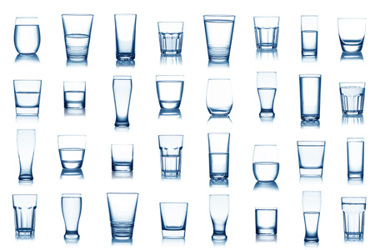As Americans Focus On Water Quality, These States Boast The Best
By Ramah Vaughn, Director of Utilities Intelligence at J.D. Power

Water season has arrived. Whether it’s a condensation-soaked glass on a hot day, a glistening pool filled to the brim, or a cleansing shower after hours at the beach, summer is a time when Americans interact the most with the water from their taps.
As the United States approaches Summer 2023, the quality of drinking water has become a hot topic. Years after water crises in various U.S. cities, federal regulators are now taking unprecedented action in cracking down on PFAS chemicals to ensure safer, higher quality water for residents.
Of course, some states are further ahead in that fight than others. And even though some have to contend with a number of factors – from varying availability of natural resources to different water sources – many utilities are working hard to ensure quality water that is delivered reliably and billed easily, all from a utility that communicates well with its customers.
Methodology
To determine which states have the best tap water, J.D. Power analyzed feedback from customers of water utilities regarding their experiences in six factors: quality and reliability; price; conservation; billing and payment; communications; and customer service. Of those six factors, this analysis focuses on customers’ feedback on which states have the best quality and reliability. The study tracked customers in all 50 states and the District of Columbia. To be eligible to be ranked, states represented must have a water utility that serves a minimum of 400,000 residential customers as well as a minimum 100 survey respondents.
In the study, the relative importance of each attribute on overall quality and reliability is derived using J.D. Power proprietary index methodology. These importance weights are then applied to customer ratings to create a score that ranges from 100 to 1,000 points.
The Blue (Water?) State
After analyzing the data, Kentucky ranks highest with a score of 768 (on a 1,000-point scale). A hallmark of the Blue Grass State’s success: Kentucky’s performance at the tap was so good that the state was actually able to trademark its tap water (called Pure Tap), a feat some states would not dare to attempt.
Kentucky: 808
Washington :808
New York: 801
Oregon: 796
Kansas: 795
Massachusetts: 793
Connecticut: 789
Minnesota: 788
Virginia: 785
Hawaii: 782
Washington State finishes in a virtual tie with Kentucky, as residents made note of their willingness to drink tap water. More than half (55%) of Washington State residents said they always drink tap water, which ranks among the highest in the country. New York places third, thanks in large part to recent infrastructure improvements made throughout the Empire State.
Bottom of the Barrel
Unfortunately, not every state’s utility is hitting those high marks when it comes to overall satisfaction with public water supplies. While most of the lower-ranked states were close to the meaty part of the satisfaction curve, there is a precipitous drop toward the bottom of the list. Alabama, which had an quality and reliability score of 701, was the lowest-ranking state in the analysis, struggling in virtually every category evaluated.
Indiana: 756
Arizona: 750
Mississippi: 750
Ohio: 748
Pennsylvania: 748
Texas: 737
New Mexico: 731
Oklahoma: 726
Maryland: 721
Alabama: 701
Glass Half Full
As more Americans have become dedicated to conservation efforts, there has been renewed customer interest in the quality of the water in the home. For example, refillable water bottles have become a fixture in homes and offices around the country, but those are only as good as the water that goes in them. Even with the help of filters from the likes of Britta and ZeroWater, customers must know that their utility is working for them to provide as pure of a water supply as they can, while offering clear communication, billing, and reliable overall service.
There are plenty of states that are achieving those standards, but some remain woefully behind. And with regulators starting to shine a microscope on water quality, now has never been a better time for utilities to ask the tough questions about how they can improve and rise to the occasion to deliver a better product.
This Utilities Intelligence Report is based on responses from 36,833 residential water utility customers nationwide and was fielded from June 2022 through March 2023. It was authored by Ramah Vaughn, director of utilities intelligence at J.D. Power.
This is an adapted form of a utilities intelligence report from J.D. Power.
